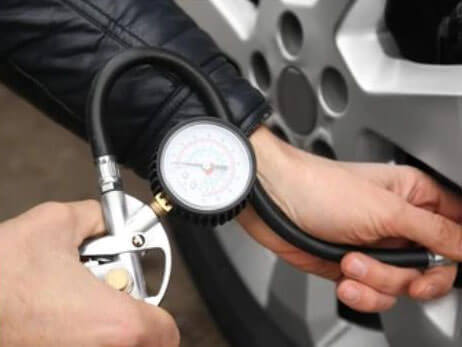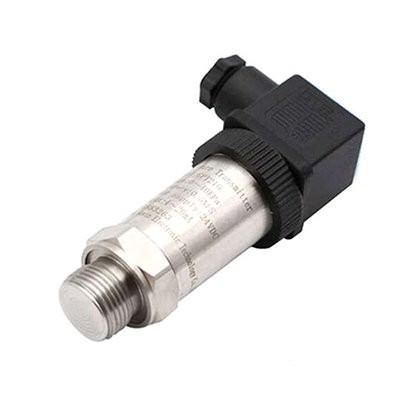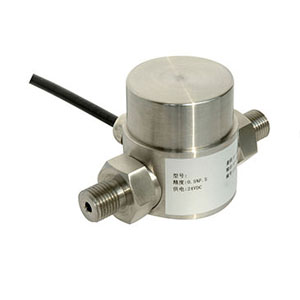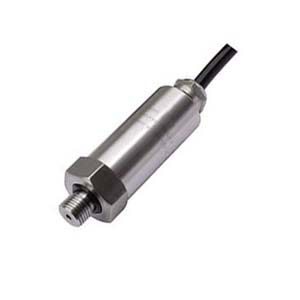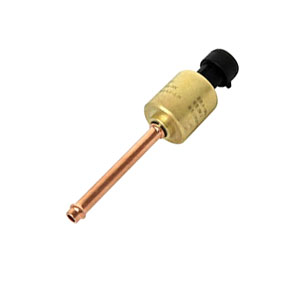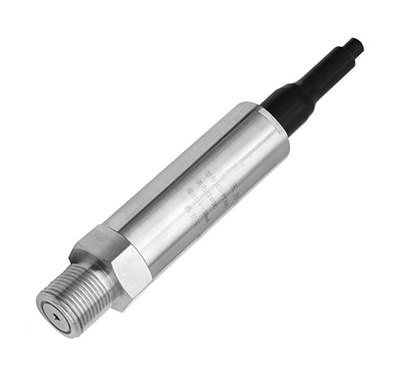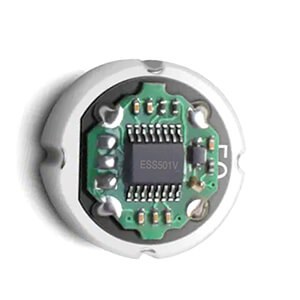What is differential pressure?
Sometimes it’s not required to recognize the absolute pressure of a liquid or a gas. Rather, just the distinction between two points in the system being kept track of need be recognized. In such circumstances, you can rely on differential pressure sensors.
Differential pressure (DP or∆P) is the distinction in between any type of two applied pressures. Almost all pressure analyses are thought about differential pressure analyses, as pressure is measured as
- Absolute pressure, in connection with vacuum
- Gauge pressure, in connection with atmospheric pressure.
The difference in between vacuum, gauge and also differential pressure nonetheless is the referral pressure value.
Absolute pressure has a fixed referral of 0 psi, complete vacuum.
Bi-directional pressure, or gauge pressure, has a fixed referral of atmospheric pressure, a set value that changes based upon atmospheric conditions.
By measuring differential pressure, users are able to easily and also accurately keep an eye on filter problems, liquid degrees in closed containers, liquid flow rates inside a pipeline, and also even the outcome torque of hydraulic electric motors.
Check more details about gauge pressure
Check more details about absolute pressure
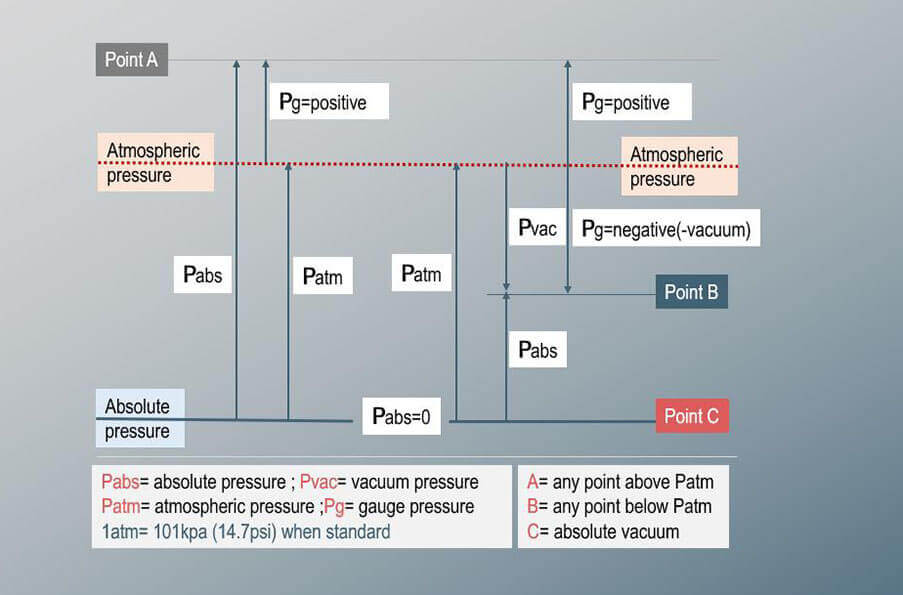
Click to find more details about: the relationship and difference among gauge pressure, absolute pressure, differential pressure.
What are differential pressure sensors?
Most of the differential pressure-measuring devices have two input ports. One unknown pressure is related to each port, and the outcome is the difference in between the two pressures.
An alternate way to measure differential pressure would be to measure each pressure with a different device and afterwards subtract one reading from the various other. This would produce a much less accurate measurement of the differential pressure because of the widely known issue that the procedure of subtracting dimensions intensifies the fundamental inaccuracy in each specific measurement. This is a certain problem when measuring differential stress of reduced magnitude.
Differential pressure can be measured by unique forms of a lot of the pressure-measuring devices explained earlier. Diaphragm pressure sensors, and also their piezoresistive, piezoelectric, magnetic, capacitive, as well as fiber-optic called versions, are all commonly offered in a differential-pressure-measuring type in which the two stress to be subtracted are related to either side of the diaphragm.
The differential pressure sensors will provide you a comparative measurement between two points (see diagram below). One instance may be previously and also after a valve in a pipe. In case of the valve is completely open, the pressure on both sides should be the same. If there’s a difference in the pressure, it could be the valve isn’t fully open or there’s an obstruction.
Differential pressure sensors are typically packaged with two ports to which pipelines can be connected. The pipelines are then connected to the system where the measurement is to be made. Industrial differential sensors might be incorporated right into a standard suitable, allowing it to be constructed right into existing pipework.
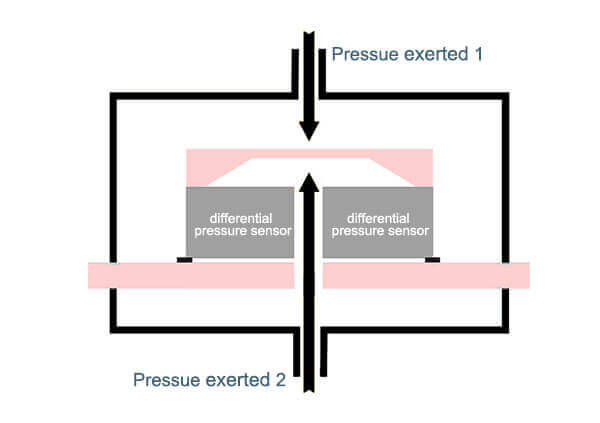
How differential pressure sensor work to sense the pressure?
Typically, the two stress to be measured are applied to opposite sides of each diaphragm. The deflection of the diaphragm, either positive or negative with respect to the resting state, figures out the difference in pressure.
Some industrial differential sensors in fact make use of two separate absolute sensors, making use of inner electronic or capacitance devices to determine and give the difference in pressure to the control system.
This might hold true in circumstances where two different kinds of sensors are required as per the medium being measured, such as different fluid and also different gas, or the atmosphere of the measurement (see below).
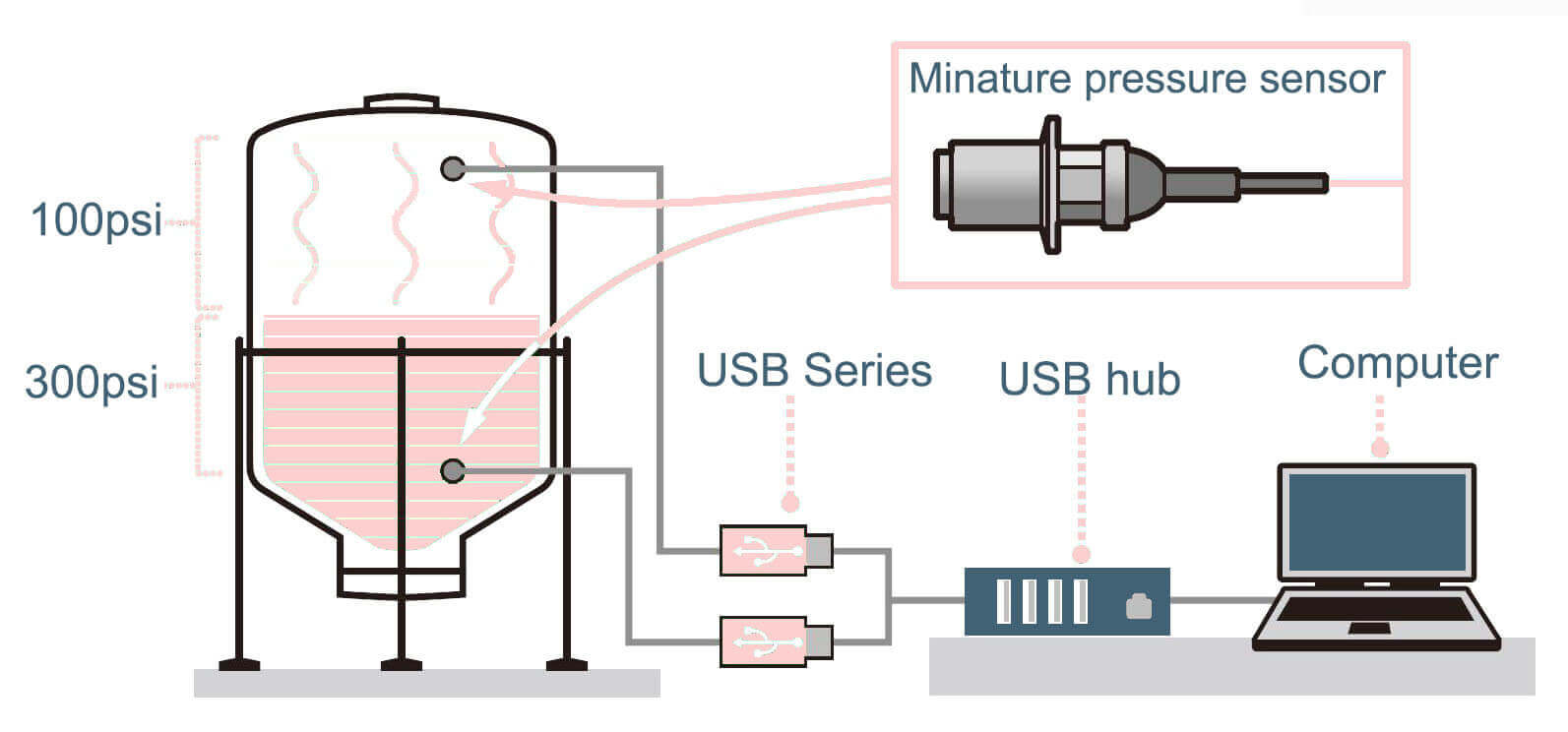
Al lot of the board-level sensors readily available utilize piezoresistive sensing elements. The most basic of these use a Wheatstone bridge configuration which needs a signal conditioning circuit to enhance its output (see below).
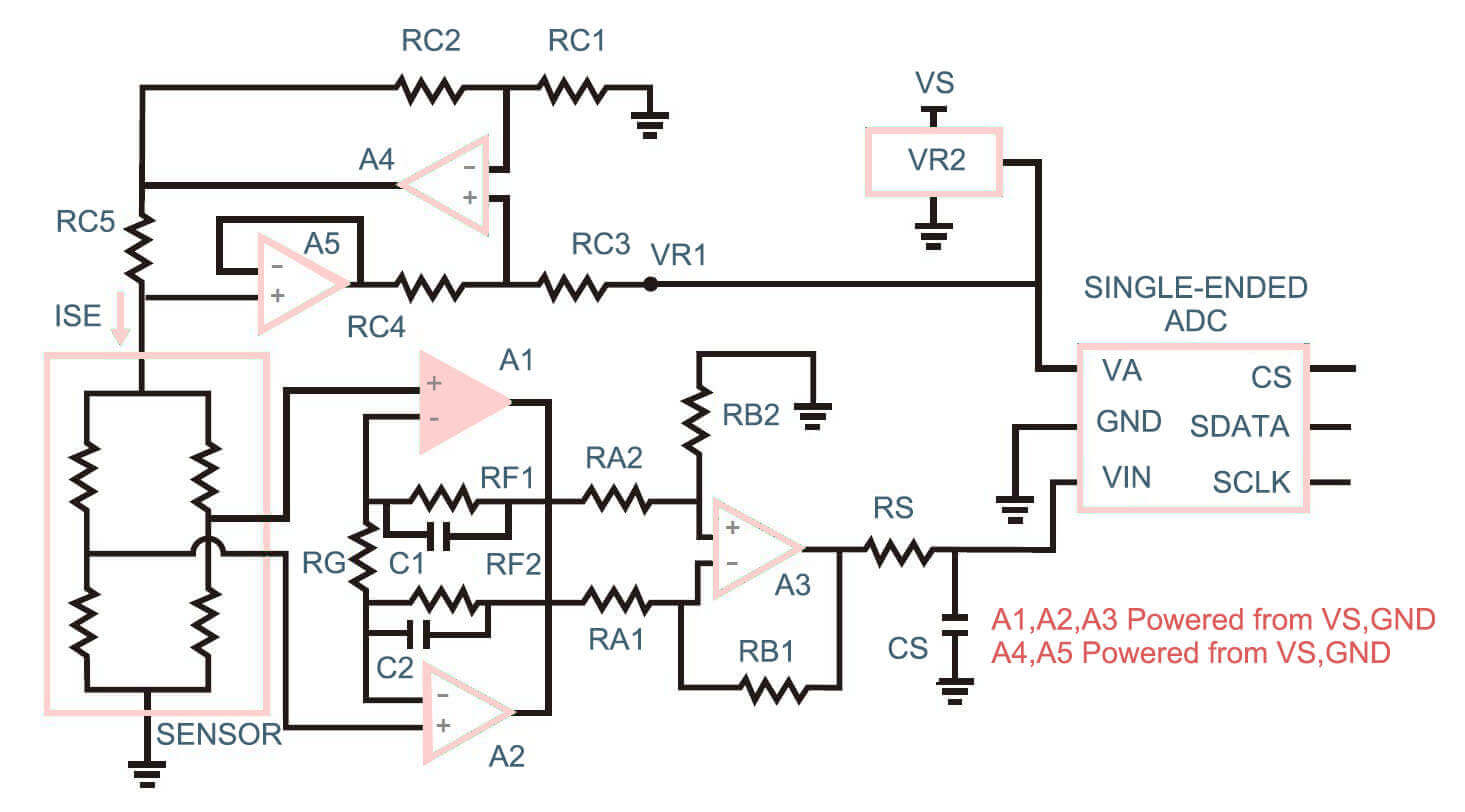
Circuits like the above layout apply a continuous current to the bridge. The output signal is then amplified and related to the input of the measurement system. If your application is based upon a microcontroller, the signal could be linked to an ADC input pin. Otherwise, there are several standalone ADCs with digital outputs that could be sourced as an alternative.
The analogue front end (AFE) might additionally need to enable arrangement for balanced out voltage, temperature compensation, as well as span.
If you’re looking for an easier solution, many manufacturers offer totally integrated differential sensors. Some may consist of temperature settlement circuitry together with 2 phases of boosting, enabling it to be merely connected to the ADC input of a microcontroller.
Check out more details you may interest
How do I integrate a differential pressure sensor right into my circuit?
If you’re establishing a microcontroller-based differential pressure measurement system there are a variety of board-mounting sensors available to pick from. As we have actually already seen, some give a conditioned and also intensified analogue result that can be put on an ADC input.
Others digitize the signal inside the sensor, enabling them to be linked to a digital serial interface such as I2C or ZACwireTM.
I2C is a relatively popular interfacing modern technology and is even readily available on some of the smallest 8-bit microcontrollers. Calling for just two cables, one is made use of for a clock while another is a bi-directional data line.
Since I2C supports several nodes, it’s likewise vital to consider the total data transfer of the bus. As even more devices are added to the bus, the risk that the pressure sensor can not be accessed as typically as preferred rises. One more essential consideration is the dimensioning of the pull-up resistors on the bus. The main spec for I2C provides an appropriate description of just how to determine the necessary worth.
Can I use an industrial differential pressure sensor in my layout?
There’s an apparent destination to using an industrial pressure sensor over board-level device. They’re robustly built, housed primarily in a steel housing, as well as feature a threaded installation, making them simple to fit to pipes and also tanks. Industrial pressure sensors are largely made for combination into manufacturing atmospheres, linked to a programmable logic controller (PLC).
Because industry pressure sensors are installed in systems that high levels of functional safety as well as robustness, the interfaces they provide can seem a little unusual. Many analogue outcome sensors provide a voltage outcome with a vast array (0– 20 V) or supply their outcome as a current in the range of 4– 20 mA. The goal behind such sensor interfaces is to reduce level of sensitivity to background noise over the long wire sizes used. Some examples of transmitter type gauge sensor circuitry are revealed listed below.
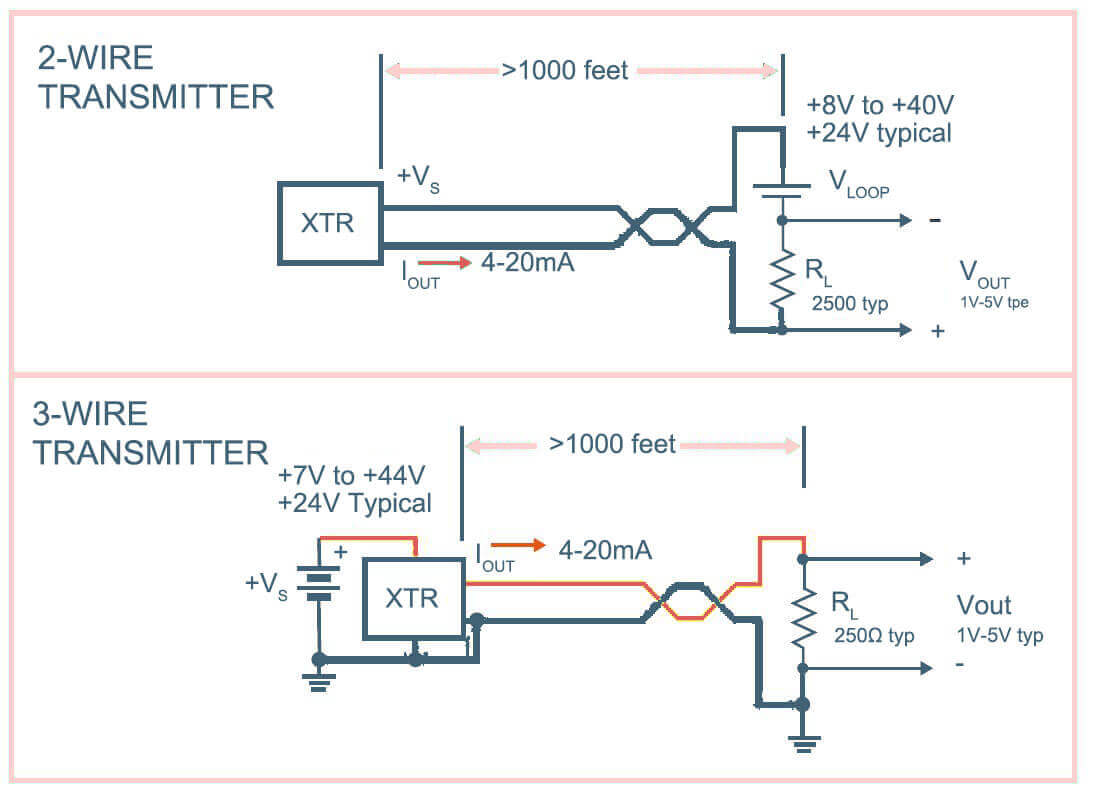
Like in other business industries, industry sensors are likewise moving to digital user interfaces. This has the advantage that several sensors can all be connected to the same wiring loop, saving money on cabling intricacy. Some of these user interfaces, such as CAN open, can be linked to a microcontroller relatively conveniently.
What applications are differential pressure sensors made use of in?
Differential pressure sensors frequently locate a home in industrial environments where a difference in pressure can be used to identify the flow of gases or fluids. This can consist of
- Effluent treatment plants,
- Offshore and subsea gas
- Oil handling & Processing
- Remote heating systems utilizing heated water or vapor.
- Others
They also find their way into the sprinkler system deployed for fire protection.
If it’s needed to measure the quantity of liquid in a closed vessel, a differential pressure transmitter can likewise be utilized.
As long as the density of the liquid does not change with temperature variant, the elevation of the column of fluid can be determined from the pressure, liquid density and also gravity.
In the medical field, differential pressure sensors are used for treatment of deep blood vessel thrombosis, infusion pumps, and respirator and breathing detection equipment.


